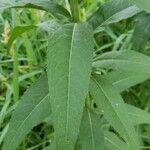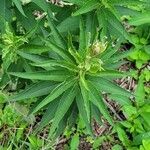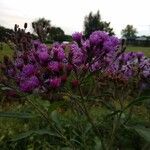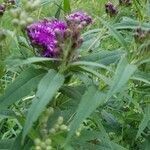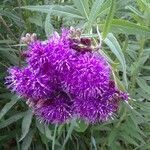Plants 3–12+ dm. Stems puberulent, glabrescent. Leaves mostly cauline; blades ± lanceolate, 5–12(–20+) cm × 5–18(–40+) mm, l/w = 5–9(–14+), abaxially glabrate (pitted, with awl-shaped hairs in pits), adaxially scabrellous, resin-gland-dotted (sometimes pitted). Heads in congested, corymbiform arrays. Peduncles 1–8(–12+) mm. Involucres ± campanulate, 5–7(–8+) × 4–6 mm. Phyllaries 25–35+ in 4–5+ series, glabrescent, margins arachno-ciliolate, the outer lance-ovate, 1–3 mm, inner oblong to linear-oblong, 5–7+ mm, tips acute or rounded-apiculate. Florets 12–25+. Cypselae 3.5–4 mm; pappi fuscous to purplish, outer subulate scales or bristles 20–30, 0.5–3+ mm, intergrading with 35–45+, 5–7+ mm inner subulate scales or bristles. 2n = 34.

